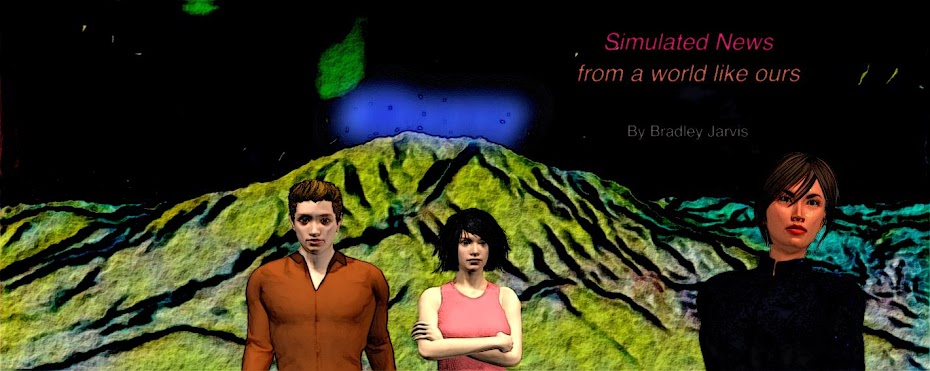By Maura Jackson (World: Hikeyay)
Those of you who have read this blog’s archive already know quite a bit about me thanks to my husband Will, who has written extensively here about our world’s international effort to drastically reduce the threat of humanity going extinct. We’re still in the early stages of implementing our global strategy, which we are sharing in the hope that we can help you and you can help us to achieve this critical goal.
I want to brief you on what many call the Interlink, so we can all be on the same page about what it is, what it isn’t, and what it might become in the future. Most of you have communications networks that enable you to share information around the world. The Interlink enables communication between universes; but is much more limited than what you’re used to: capable of text, photos, and crude video at best.
“Interlink” and “Mountain Sisterhood” are terms that have been used interchangeably to describe this system. Actually, Mountain Sisterhood is the core part of the Interlink infrastructure that enables transmission of messages, with some encoding at both ends of the transmission. The rest of the Interlink interprets messages at both ends, making them readable in whatever formats are required.
There is currently only one place in each world capable of using the Interlink: the mountain bunker where you are receiving this, under a community whose name is also used as the call sign for your world. In the absence of a community, the mountain’s name is used instead. The mountain was chosen because it is a “hotspot” that was created around 1920 when a dark matter collision with one world spawned several near-identical copies of that world, each in a parallel dimension that shares a common bubble of spacetime. The hotspot on each world is a node of a network of trans-dimensional tunnels, called “sisters,” that connect them all and allow a limited range of signals to traverse them. There is some evidence that other tunnels exist, but they are transient and not localized enough to be usable.
Our artificial intelligence creation Sally has mapped the network and, along with her other duties, has developed ways to modulate the signals to allow meaningful communication as the processing component of the Interlink. For the past three years, she has experimented with inserting parts of herself into the network and what she calls “jumping” into data processing components on different worlds and altering them to act as nodes of tunnels that mimic aspects of the transient ones which she is also attempting to map. When successful, she expects to enable communication on most worlds that will rival current global communication and require fewer resources in support of minimizing the extinction risk.
Reality Check
This post is pure fiction with questionable physics that explains the existence of multiple worlds and the means of communicating between them. At best, it describes how inhabitants of simulated worlds might perceive themselves and their interactions with limited knowledge of the essence of their reality.
From the perspective of my fiction, Maura is avoiding admission that she and her identical copies on other worlds are the naturally transient “sisters” and that their ability to communicate their thoughts is amplified in proximity to the mountain she mentioned (Colorado’s Green Mountain in our world) as well as Mauna Kea in Hawaii.


.png)